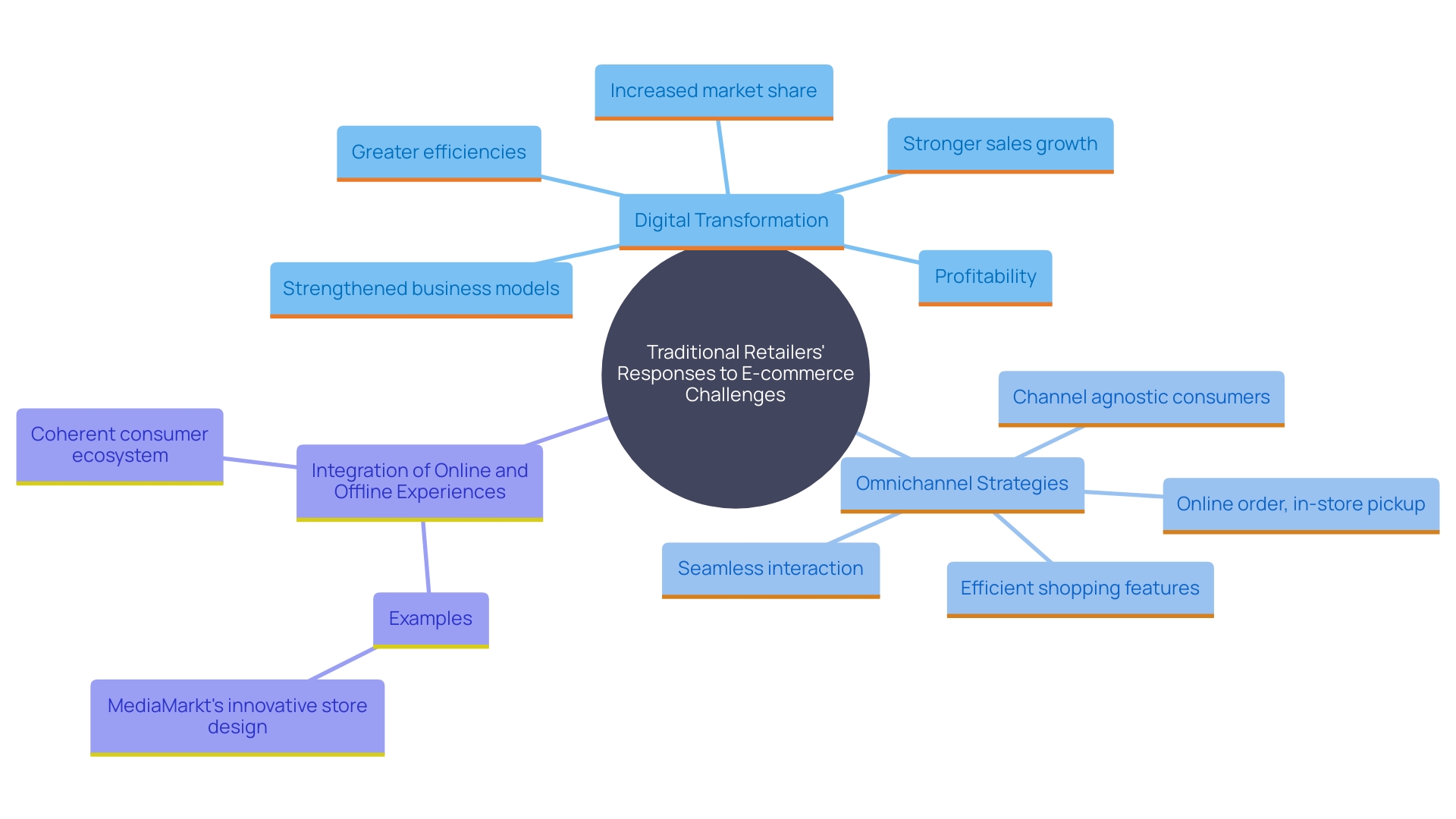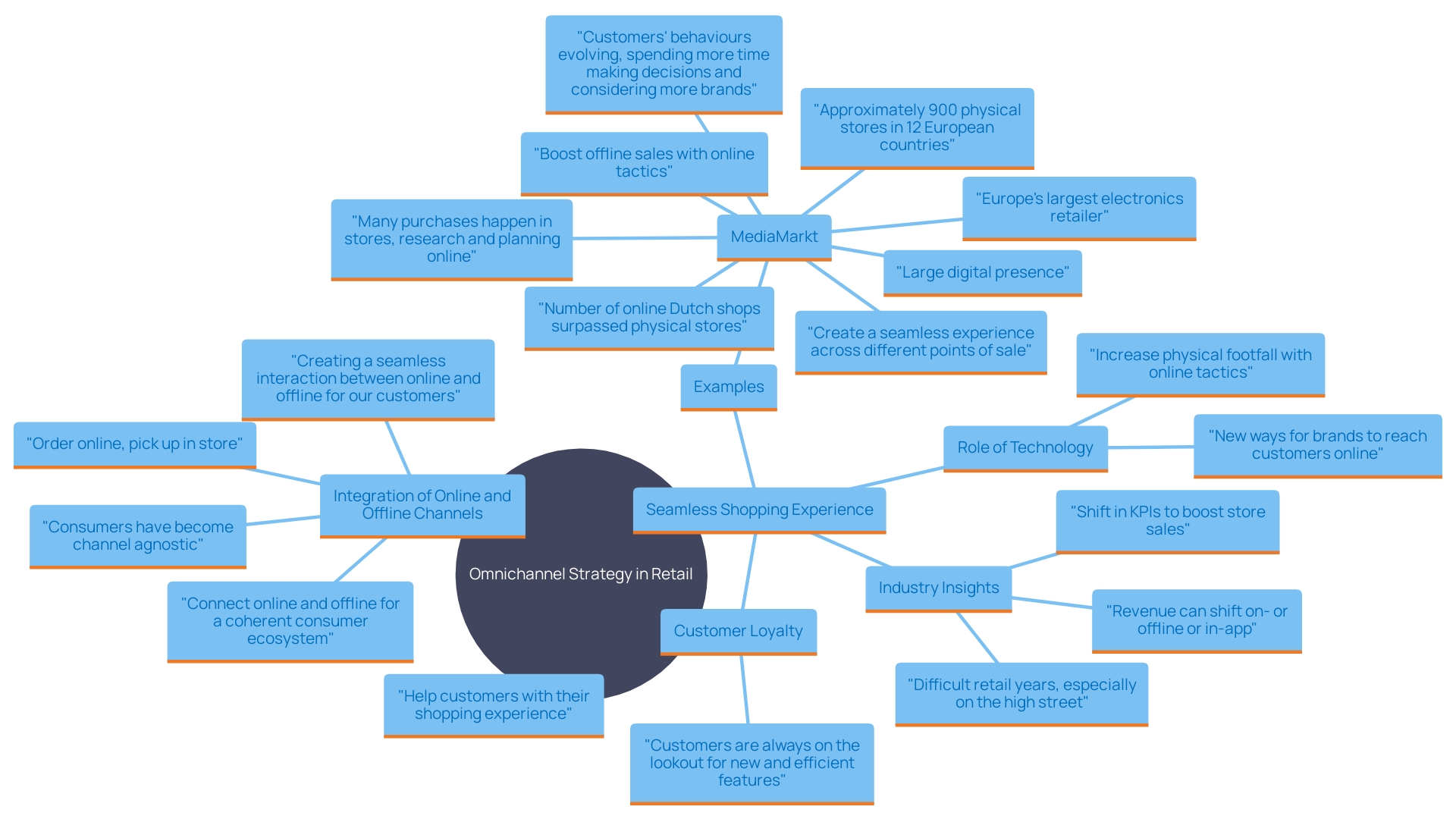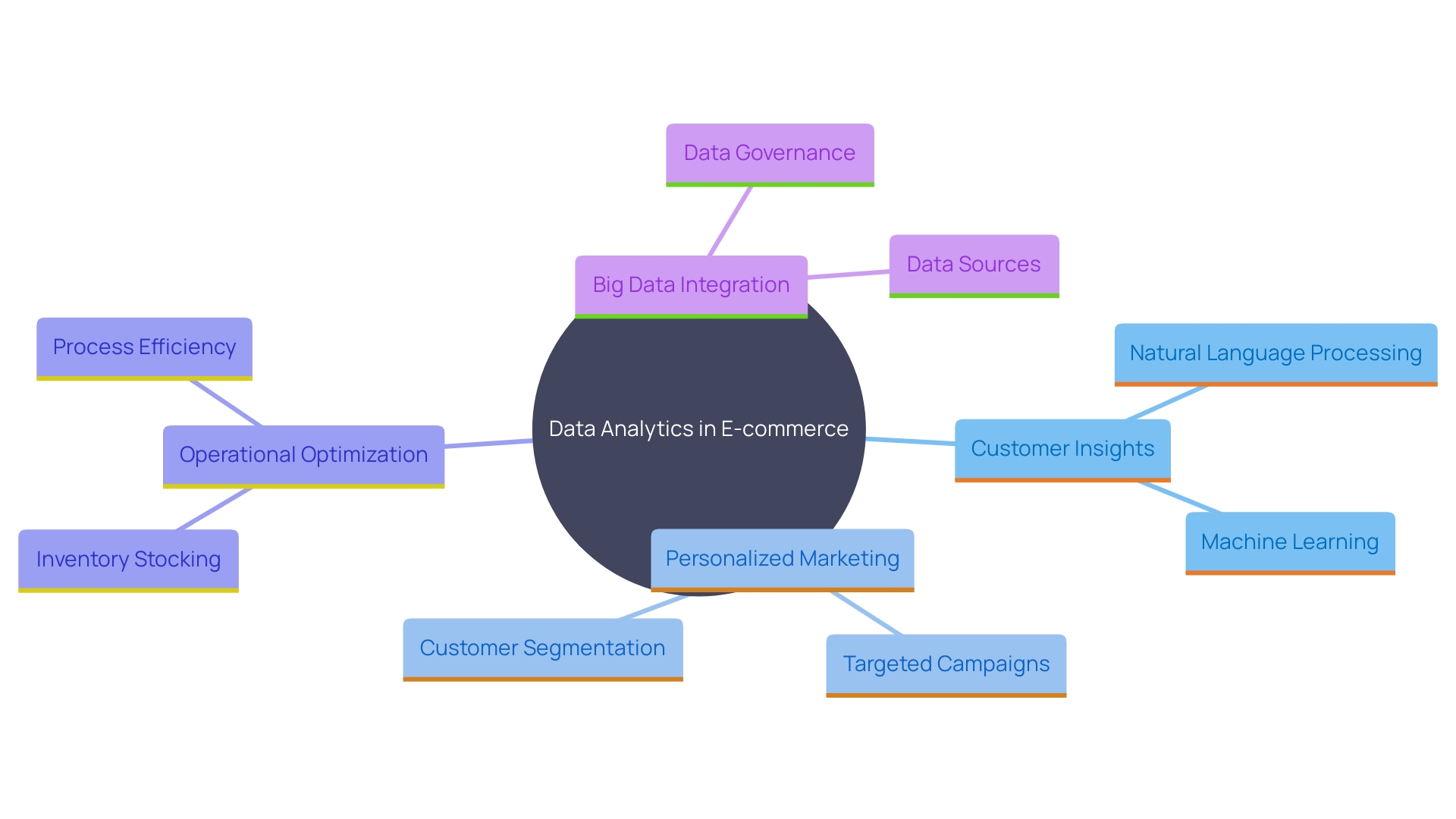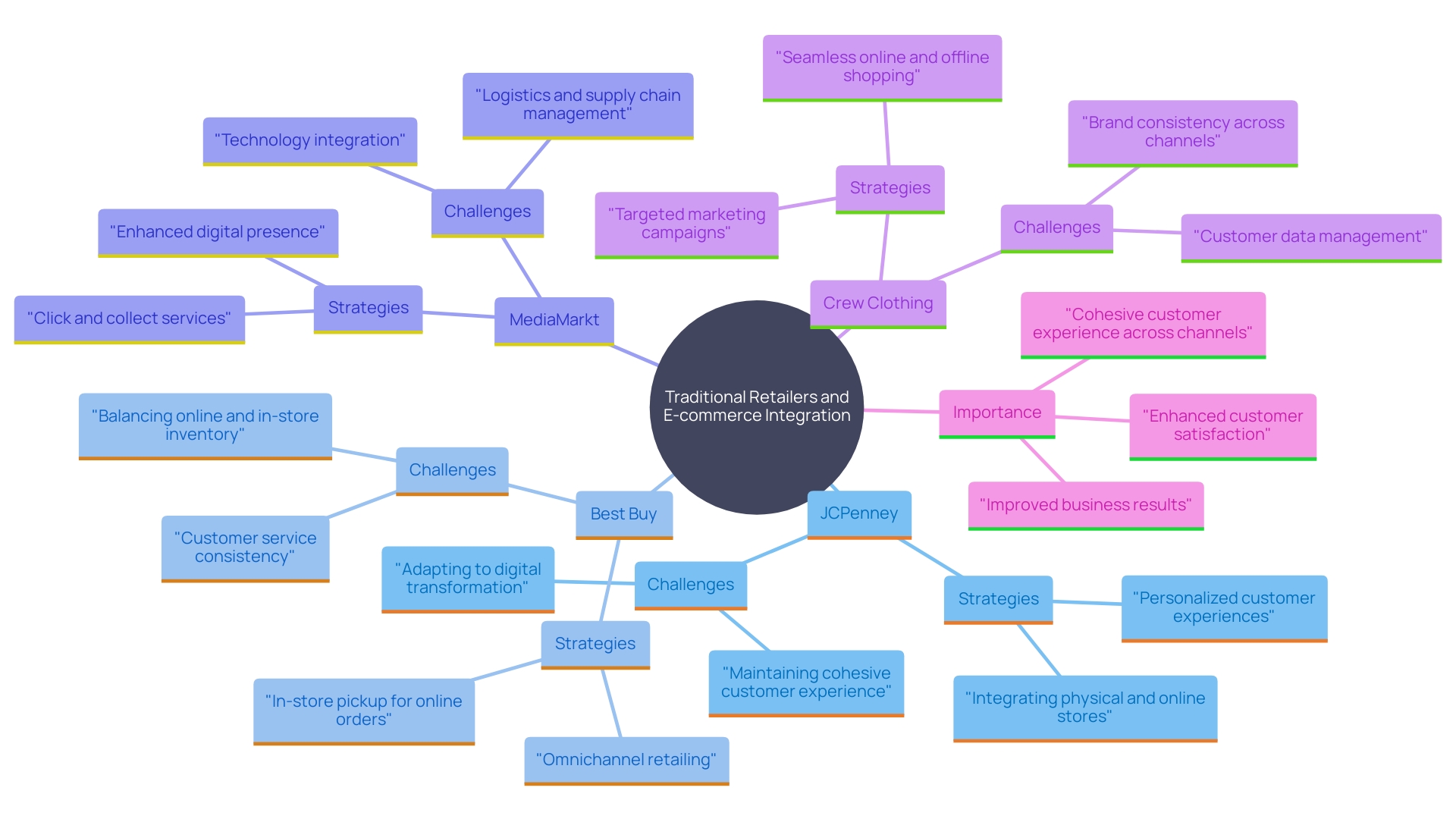Introduction
The rapid expansion of e-commerce has fundamentally transformed the retail landscape, presenting both unprecedented challenges and remarkable opportunities for traditional retailers. As consumers increasingly favor the convenience and variety of online shopping, brick-and-mortar stores have experienced notable declines in foot traffic and sales. This shift necessitates a comprehensive reevaluation of retail strategies, focusing on the integration of digital and physical experiences to stay competitive.
Retailers must innovate and establish a robust online presence while competing with e-commerce giants known for their supply chain efficiency and exceptional customer experiences. The opening of MediaMarkt's largest electronics store in Hamburg exemplifies this blend of digital and physical retail, showcasing the importance of high-tech features and immersive customer experiences. Embracing digital transformation is critical, as businesses investing in an omnichannel strategy have demonstrated greater efficiency and stronger sales growth, even amid economic downturns.
Retailers who leverage technology and create seamless customer experiences can capitalize on these shifts, not just to survive but to thrive in the evolving retail environment.
Understanding the Shift: E-Commerce Challenges and Opportunities
Traditional retailers have faced monumental challenges due to the exponential growth of e-commerce. Consumers are increasingly opting for the convenience and variety offered by online shopping, leading to significant declines in foot traffic and sales for brick-and-mortar stores. This shift has necessitated a comprehensive reevaluation of retail strategies, with a focus on integrating digital and physical retail experiences.
Retailers must not only establish a robust online presence but also innovate to compete with e-commerce giants that have perfected supply chain efficiency and client experience. MediaMarkt's recent opening of Europe's largest electronics store in Hamburg exemplifies this approach. The store, which covers 15,000 m² and features advanced technology like branded boutiques and a gaming experience area, emphasizes the significance of merging digital and physical retail to draw in and engage shoppers.
The importance of digital transformation in retail is further underscored by the consistent performance of businesses that have embraced these changes. Research shows that companies investing in an omnichannel strategy have achieved greater efficiencies and stronger sales growth, even during economic downturns. For instance, the online share of total retail sales in the U.S. reached 14.9% in the first three quarters of 2023, demonstrating the enduring shift towards e-commerce.
Retailers must view these shifts as opportunities to innovate and connect with clients in novel ways. By leveraging technology and creating seamless customer experiences, traditional sellers can not only survive but thrive in the evolving retail landscape.

Adopting an Omni-Channel Strategy
Adopting an omnichannel strategy has proven to be a highly effective response to the e-commerce challenge. This approach enables businesses to offer a seamless shopping experience across multiple platforms by integrating online and offline channels. For instance, MediaMarkt, Europe's largest electronics retailer, has successfully merged its digital and physical commerce channels. With approximately 900 physical stores across 12 European countries and a significant digital presence, MediaMarkt understands that while many purchases still occur in-store, much of the research and planning happens online.
Companies like MediaMarkt create a consistent customer experience, enhancing engagement and returns on investment. This strategy is vital as the retail landscape evolves, with online shops surpassing physical stores in numbers for the first time in the Netherlands. The ambition to open 20 flagship stores in Europe by 2026 underlines MediaMarkt’s commitment to blending innovation and technology in its physical locations, such as the new store in Hamburg, which boasts 15,000 m² of retail space and numerous branded boutiques.
Statistics reveal that omnichannel consumers are the most loyal and profitable for retailers. As clients today are more connected than ever, they expect businesses to meet them wherever they are. Delivering a consistent, seamless experience across all channels encourages brand loyalty and keeps clients returning. This is further supported by Bhavana Jaiswal, country e-commerce head of Ikea, who stated, “The client is always omnichannel in terms of the way they do. The way we have adapted our strategy for India is we are looking at an omnichannel expansion plan for us.”
Retailers must remain agile, constantly evolving their omnichannel strategy to keep up with changing customer needs and behaviors. The integration of emerging technologies and a deep understanding of client preferences are crucial for maintaining a competitive edge in today’s market.

Leveraging Data Analytics for Personalized Experiences
Data analytics is crucial in transforming conventional sellers into competitive participants in the e-commerce arena. Through the comprehensive analysis of client data, retailers can uncover valuable insights into purchasing behaviors, preferences, and trends. For example, Walmart utilizes advanced analytics to provide personalized marketing, customizing promotions and product suggestions to individual clients. This strategic approach not only enhances customer satisfaction but also drives sales, as personalized experiences tend to resonate more with consumers.
Retailers need to invest in robust analytics tools and capabilities to harness the full potential of this information. The integration of big information analytics, which encompasses the variety, velocity, volume, and veracity of information, is essential. This involves gathering and integrating organized and unorganized information from diverse sources such as social media, sensors, and transaction records. Ensuring the reliability and accuracy of this information is crucial, as emphasized by industry experts like Aditya Priyadarshan, who noted that such insights can serve as a 'perfect anchor in the storm' for businesses.
The effective use of data analytics also enables retailers to optimize their operations. Techniques like Natural Language Processing (NLP) can extract useful information from customer reviews, helping to prioritize product updates. Furthermore, machine learning models can predict future product demand and enhance pricing approaches, ultimately boosting profitability and market share.
As the retail landscape continues to evolve with digital technology, those who embrace data-driven decision-making are likely to outperform their peers. The ongoing digital transformation, accelerated by the pandemic and the current economic climate, has demonstrated that businesses utilizing analytical insights achieve greater efficiencies and stronger growth. Therefore, investing in data analytics is not merely a trend but an essential approach for sustained success in the competitive e-commerce market.

Overcoming Challenges: Lessons from Traditional Retailers
Traditional retailers have skillfully maneuvered the e-commerce environment by enhancing their approaches through both successes and setbacks. For instance, JCPenney initially faced hurdles when their online strategy did not align with their in-store experience, causing confusion among shoppers. On the other hand, Best Buy has effectively incorporated e-commerce by improving their online platforms and training in-store personnel to support clients effortlessly across both channels. This is echoed by MediaMarkt, Europe's largest electronics retailer, which operates approximately 900 stores in 12 countries, including 72 in the Benelux region. MediaMarkt has successfully bridged the gap between their digital and physical commerce channels, ensuring a consistent customer experience and improved ROI. This coordination of online and offline approaches is vital, particularly as the quantity of online shops keeps exceeding physical ones in areas such as the Netherlands. Crew Clothing, with over 100 stores in the UK, also recognized the need for stronger visibility and a unified platform to connect their vast data, highlighting the importance of cohesive strategies in today's evolving retail market. These examples underscore the necessity of maintaining consistent branding and a seamless customer journey across all channels.

Conclusion
The evolution of the retail landscape, driven by the rapid growth of e-commerce, presents both significant challenges and valuable opportunities for traditional retailers. As consumer preferences shift towards online shopping, the need for a strategic reevaluation of retail approaches has never been more critical. Embracing a robust omnichannel strategy allows retailers to integrate their digital and physical presence, enhancing customer engagement and ultimately driving sales.
The example of MediaMarkt's innovative store concepts illustrates the necessity of creating immersive shopping experiences that blend technology with traditional retail.
Moreover, leveraging data analytics emerges as a vital tool in personalizing customer experiences and optimizing operations. By harnessing customer insights, retailers can tailor their marketing efforts and streamline their supply chains, ensuring they remain competitive in a rapidly changing market. The implementation of advanced analytics not only fosters customer satisfaction but also leads to improved profitability, positioning businesses for long-term success.
Traditional retailers must learn from both their triumphs and challenges in navigating the e-commerce landscape. Successful integration of online and offline strategies, as demonstrated by companies like Best Buy and MediaMarkt, highlights the importance of consistency across all channels. As the retail environment continues to evolve, maintaining a unified brand experience will be essential to foster customer loyalty and drive growth.
Embracing these strategies not only enables survival in a competitive landscape but also paves the way for thriving in an increasingly digital world.




